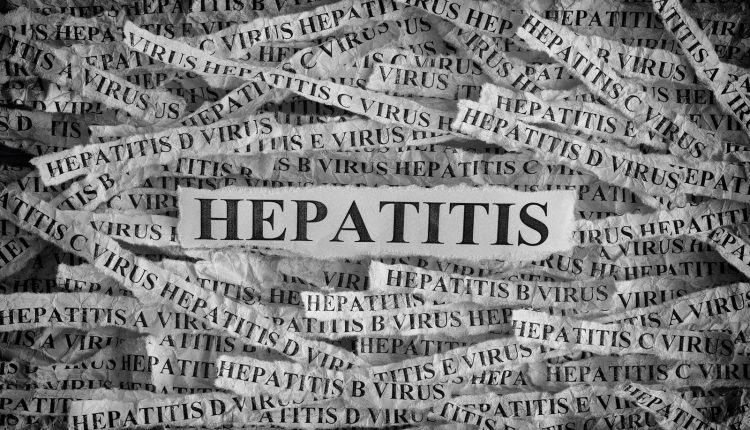
Hepatitis D (Delta): symptoms, diagnosis, treatment
Hepatitis D (Hdv, of which three genotypes have been identified) is an infectious liver disease caused by a so-called ‘defective’ virus, i.e. a satellite virus that is only able to replicate in the presence of the hepatitis B virus (approximately 5-10% of Hbv carriers have Delta co-infection)
Like the Hepatitis B virus, the Hepatitis D virus is also present throughout the world, more prevalent in developing areas and among people with a low socio-economic level.
An estimated 10 million people are infected with the Hdv virus. Genotype I is the most widespread, genotype II is most prevalent in Japan and Taiwan, and genotype III is only found in the Amazon.
Studies have shown that in Europe and the USA, approximately 25-50% of cases of fulminant hepatitis initially considered to be cases of Hepatitis B, were actually caused by Hdv.
Signs and symptoms of Hepatitis D
Infection with Hdv, in the case of simultaneous infection with the Hepatitis B virus, can manifest itself after an incubation period of 2 weeks to 2 months with signs and symptoms similar to the B virus infection, such as: tiredness and general malaise, fever, dark urine, lack of appetite, nausea and vomiting, abdominal pain, joint pain, jaundice.
Causes and transmission of Hepatitis D
Transmission from Hdv occurs in two ways:
- co-infection of Hepatitis D and Hepatitis B viruses
- Delta super-infection, i.e., the condition in which a person who is already a chronic HBV carrier also becomes infected with the Delta virus.
Transmission occurs
- through blood from transfusion and transplantation of infected organs, or through the use of needles and surgical instruments or contaminated toiletries
- by sexual transmission
- by vertical transmission from mother to child
- through biological fluids (bile, nasal discharge).
Who is at risk of contracting Hepatitis D virus
Although anyone can become ill with Hepatitis D, certain categories of people are at greater risk of coming into contact with the Hdv virus.
These include
- those who have multiple sexual partners
- family members, friends, people in contact with infected persons
- drug addicts
- children born to mothers with Hepatitis D
- laboratory staff and workers who are exposed to blood and/or may handle needles and syringes if not perfectly sterilised
- those who practice and perform piercings, manicures, pedicures
- patients undergoing haemodialysis
- those who travel to countries where the virus is particularly widespread.
Diagnosis of Hepatitis D
Hepatitis D is diagnosed by means of a blood test to detect the presence of HDV antibodies.
Approximately three months after infection, anti-Hdv antibodies appear which, when they persist for a long time (for months or years), indicate that the subject is infected and that there is chronicity of the disease (infection tends to be chronic in 90%); when the antibodies disappear, it is a sign of recovery.
Hepatitis D therapies
For the treatment of Hepatitis D, the drugs available to date (Interferon) are scarcely effective (treatment or therapy with Interferon results in a response in less than 15-20% of cases).
How to prevent Hepatitis D
The cornerstone of Hepatitis D prevention is the vaccine. In fact, the prophylaxis for Hbv also applies to the Hdv virus: there is no specific vaccine against Delta virus infection, but the vaccine against Hepatitis B is also able to protect against Hepatitis D.
To avoid infecting other people, it is important to follow certain rules of hygiene and behaviour:
- use a condom, especially in the case of occasional intercourse or multiple sexual partners
- cover any cuts or wounds on the skin
- do not donate blood, semen or tissue
- do not share medical instruments
- avoid exchanging personal hygiene and personal care items (combs, toothbrushes)
- inform your partner of the infection and recommend testing.
Read Also:
Emergency Live Even More…Live: Download The New Free App Of Your Newspaper For IOS And Android
Hepatitis E: What It Is And How Infection Occurs
Hepatitis In Children, Here Is What The Italian National Institute Of Health Says
Acute Hepatitis In Children, Maggiore (Bambino Gesù): ‘Jaundice A Wake-Up Call’
Nobel Prize For Medicine To Scientists Who Discovered Hepatitis C Virus
Hepatic Steatosis: What It Is And How To Prevent It
Acute Hepatitis And Kidney Injury Due To Energy Drink Consuption: Case Report
The Different Types Of Hepatitis: Prevention And Treatment
Acute Hepatitis And Kidney Injury Due To Energy Drink Consuption: Case Report
New York, Mount Sinai Researchers Publish Study On Liver Disease In World Trade Center Rescuers
Acute Hepatitis Cases In Children: Learning About Viral Hepatitis
Hepatic Steatosis: Causes And Treatment Of Fatty Liver
Hepatopathy: Non-Invasive Tests To Assess Liver Disease
Liver: What Is Non-Alcoholic Steatohepatitis



